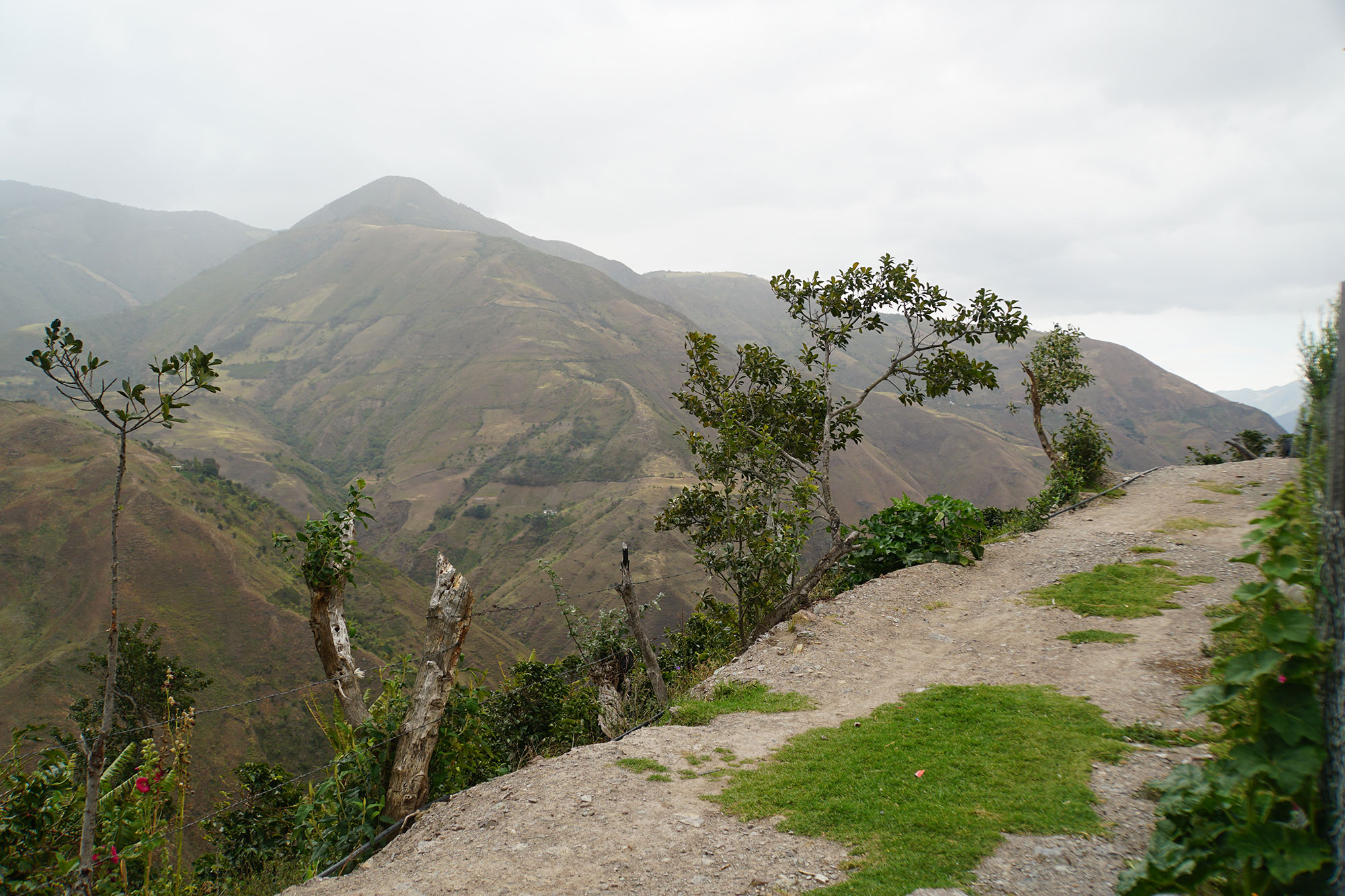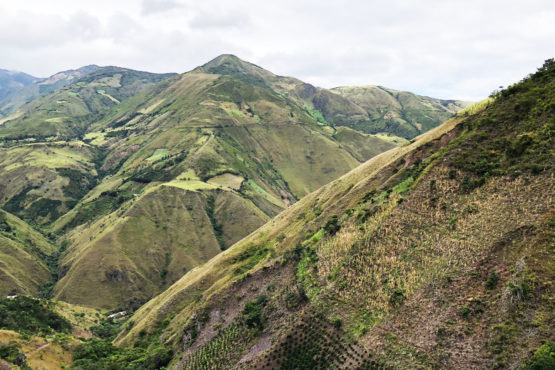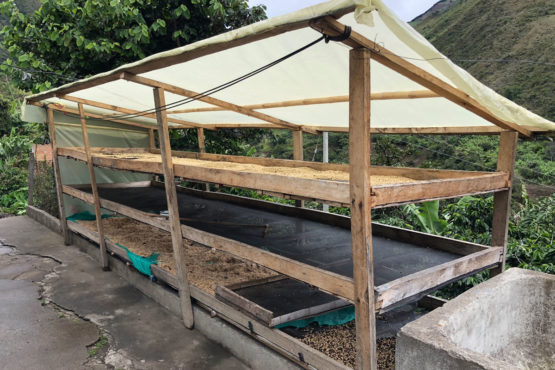Finca Mocoa Honey
Pretty elderflower and jasmine florals. Tropical acidity, with pineapple, kiwi and starfruit balanced by milk chocolate and black tea.
This coffee was produced by Eduardo Chasoy, along with his wife and their son – independent farmers who grow and produce coffee on their 1-hectare farm, Finca Mocoa. The farm is located in the town of Aponte, in north-western Nariño, Colombia. A quiet and reserved man, Eduardo is generous with his time and expertise, and proudly showcases his work to friends and neighbours. He has been recognised as a leader in Aponte’s farming community due to his efforts in educating his colleagues on the benefits of growing coffee for the specialty market. Eduardo is also a big proponent of the ‘honey’ processing method and spends much of his time training other farmers on the best practices required to achieve excellent results.
Aponte is incredibly hard to reach, as it is found deep inside the Juanambú Canyon, and sits at a staggeringly high 2,100m above sea level. The region experiences a cool climate and high winds year-round, and sits on very fertile soil, thanks to the nutrient-rich ash constantly shed by nearby Galeras Volcano.
The town is home to the indigenous Inga people and was once the northernmost point of the Incan empire. Visiting Aponte is a unique experience, since the town operates as an indigenous reserve independent from the Colombian government. On the streets, people continue to wear traditional garments and to speak to each other in the local Inga language, a dialect derived from Quechua (the pre-colonial language of people from the Amazons and the Andean Mountains). In Aponte’s society, there is no such thing as private property and farms are owned by the community at large. Town leaders, or ‘Taitas’, have the final say on how each parcel of land is cultivated. Coffee has benefited from the approval of Aponte’s Taitas due to two major factors: it is a relatively profitable and stable crop, and it prevents bigger parcels of land from being used for coca cultivation.
ABOUT NARIÑO
Nariño is located in southwest Colombia, bordering Ecuador. Coffee in Nariño is grown at elevations that reach 2,200 metres above sea level, making it some of highest grown coffee in the world. It is typically very difficult to produce coffee at such high elevations, however Nariño’s proximity to the equatorial line, coupled with its steep hills and valleys surrounding active volcanoes, provide a great angle for sun exposure and create an ideal micro-climate for coffee plants to thrive. The high elevation of cultivation combined with warm tropical days and cools nights allows for slow maturation and development of the coffee cherry, giving time for concentrated sugars to develop in the fruit and resulting in a very unique, sweet, and complex cup profile.
Until recently, much of Nariño’s potential remained largely untapped. This is in part because most of the forty thousand coffee producers in Nariño are incredibly small (averaging less than 2 hectares of land each) and often, like these small producers in Aponte, located extremely remotely. These factors, combined with ongoing armed conflict in the region, has discouraged investment in coffee development and made it difficult for coffee buyers to access these exceptional coffees.
In the early 2010s, this started to change, thanks in large part to the Colombian Cup of Excellence, which shone the light on two exceptional lots from the Buesaco municipality in Northern Nariño. This important achievement made it clear to many growers from the region that their coffee had the potential to be sold into a specialty market, and that they had the opportunity to seek greater premiums than they were receiving through other certification schemes.
Today coffee plays a big role in helping the community as they turn the page on the region’s violent past and build a more sustainable development. Many of those that left the region during the worst part of the conflict in the 90’s have since returned to continue their coffee tradition and rebuild their lives here.
Our export partners for this coffee, Pergamino, have worked hard commercialise specialty-grade coffee throughout Nariño, and have uncovered some stunning coffees and very dedicated producers in the process. They work closely with the producers to give them feedback on their coffees (provided by Pergamino’s expert team of cuppers) and provide top up payments when the coffee is sold at a higher premium.
Head here to learn more about the work of Pergamino.
HOW THIS COFFEE WAS PROCESSED
Producers in Aponte like Eduardo have become experts at ‘honey’ processing. For this lot, coffee cherries were carefully hand-picked, with several passes needed to ensure only the ripest ones were chosen. These were then pulped at each farm’s wet mill, or ‘micro-beneficio.’ After pulping, coffee was placed on drying beds without being washed, leaving coffee with a layer of mucilage that resembles a glazing of sticky honey (hence the name ‘honey’ processing). This step ensured fermentation occurred as the coffee dried.
Thanks to Aponte’s cool, windy climate and high elevations, coffee generally dries more quickly and evenly than in lower parts of Colombia. This leads to more consistency in the coffees produced, and encourages the development of cleaner, more complex flavours in the cup. To ensure the drying stage occurred uniformly, coffee for this lot was regularly turned by hand until it reached ideal moisture content.
Once dry, the coffee was delivered to Pergamino’s warehouse, where it was cupped and graded, and then rested in parchment until ready for export.





